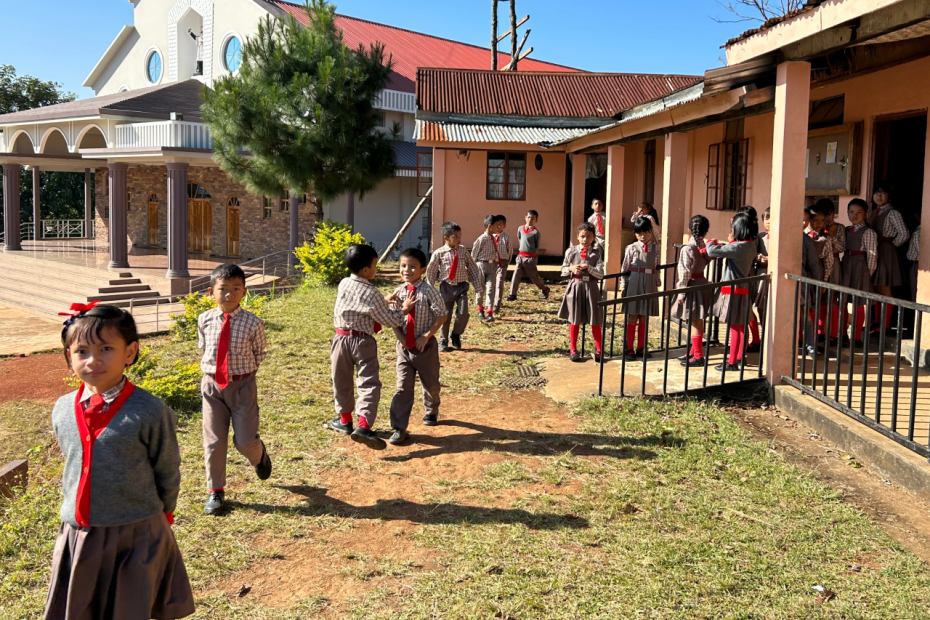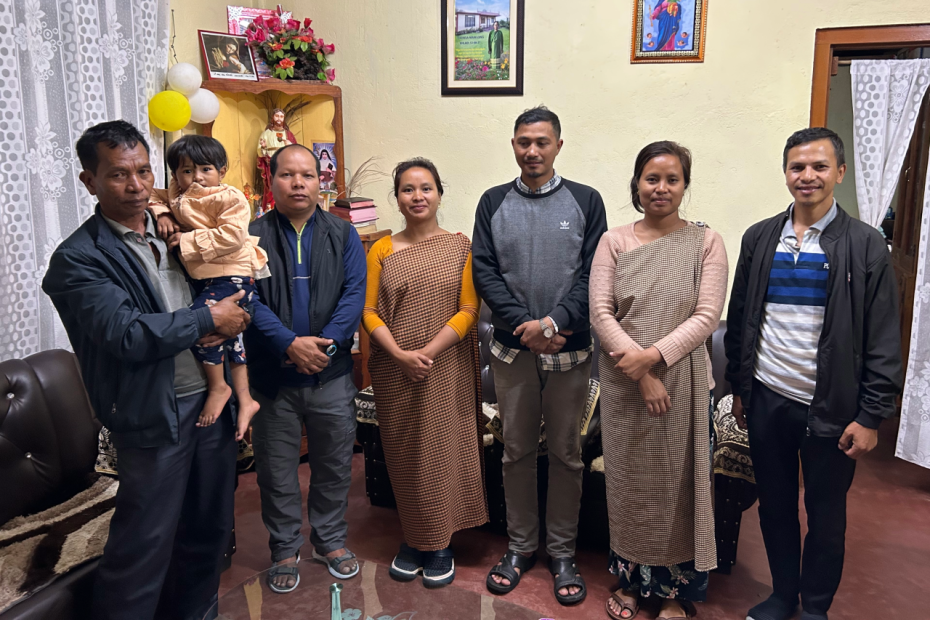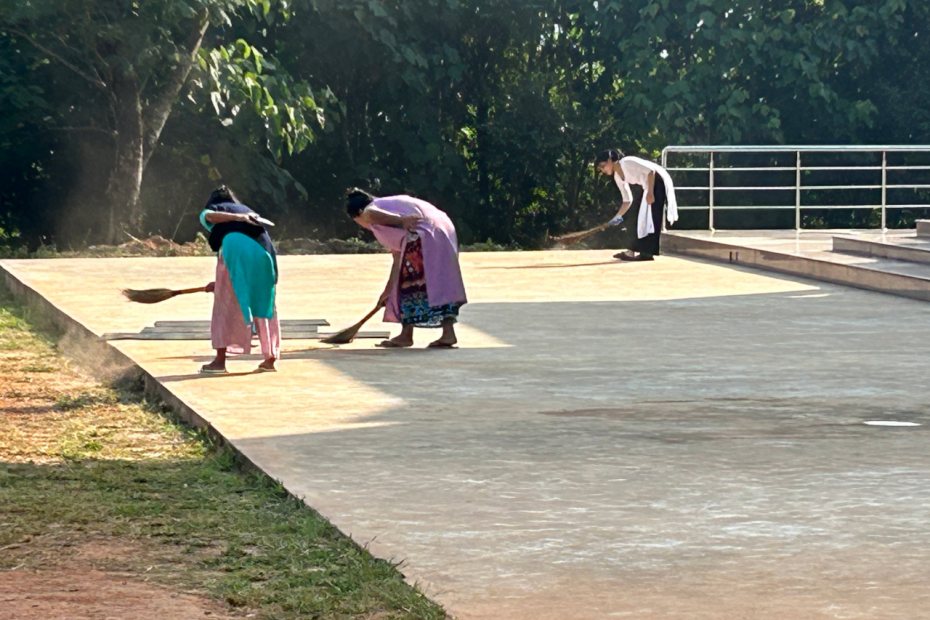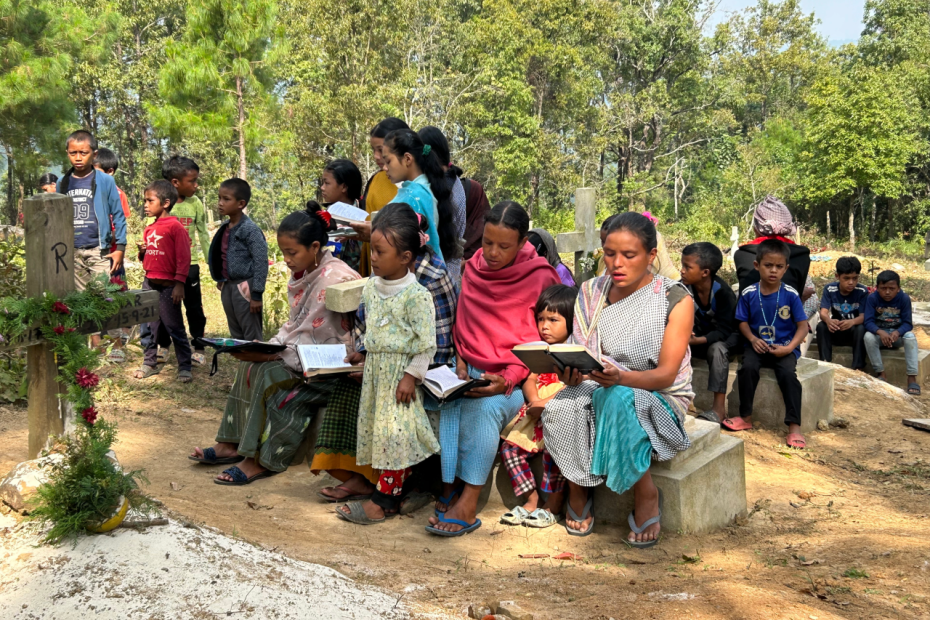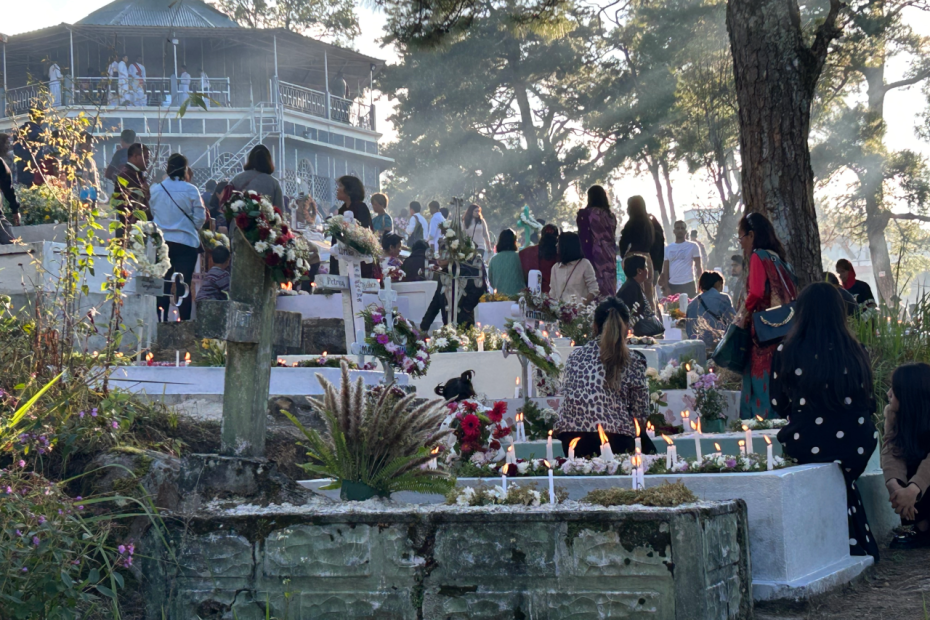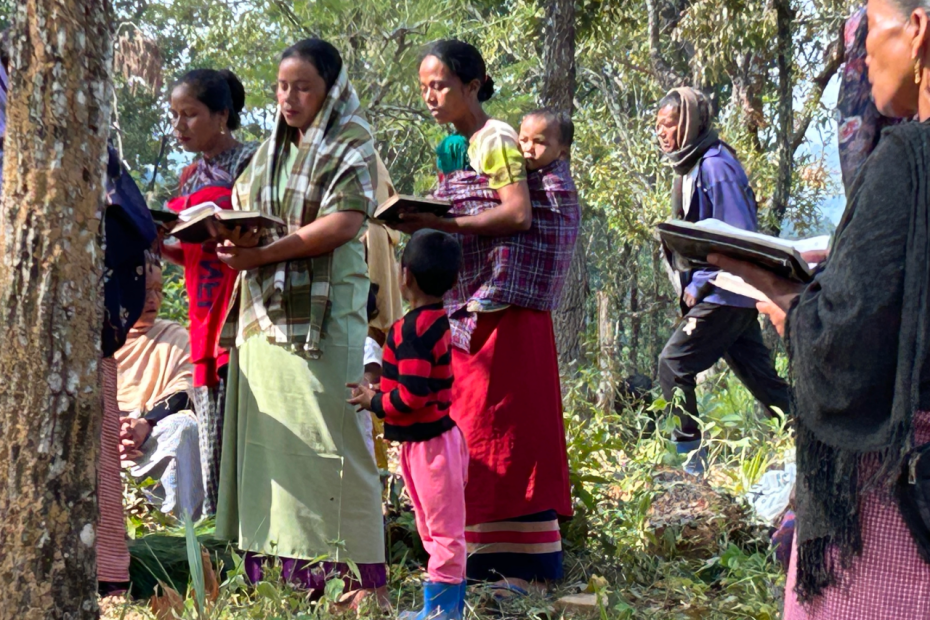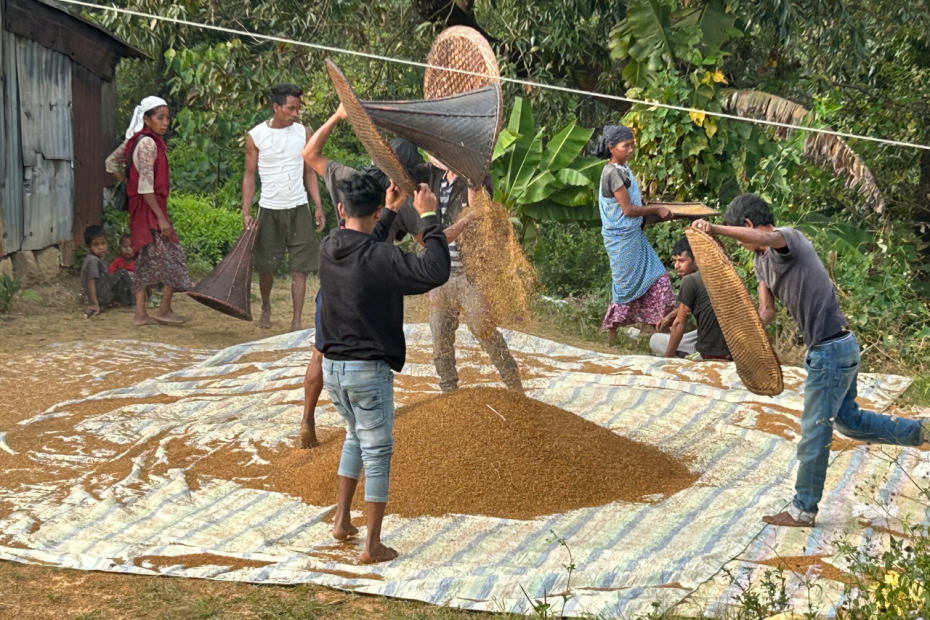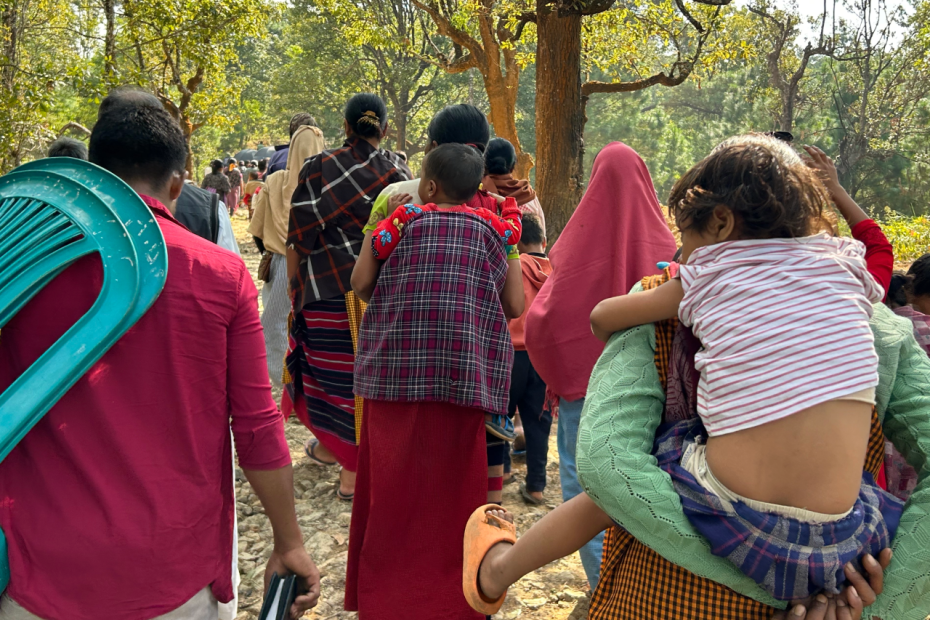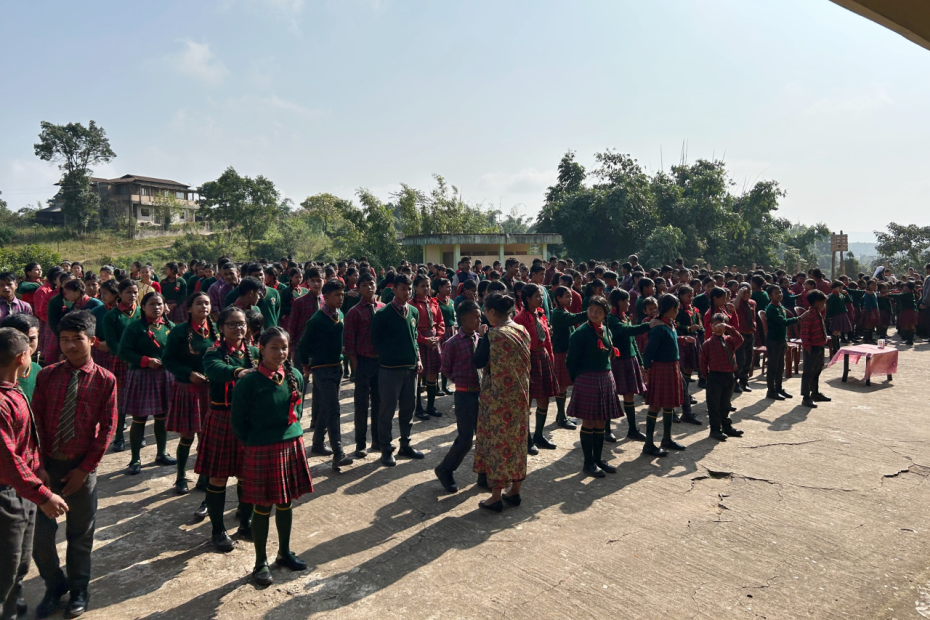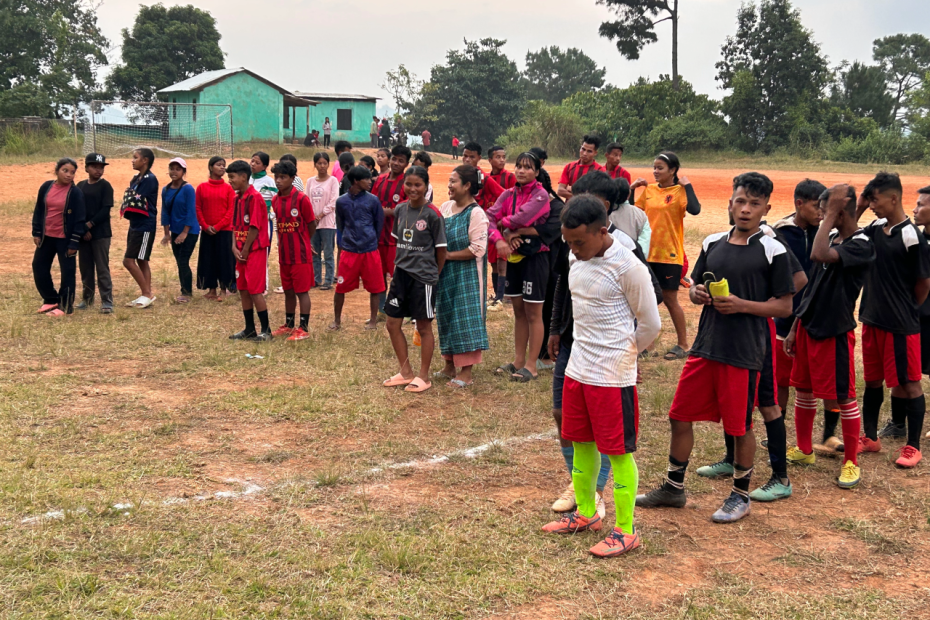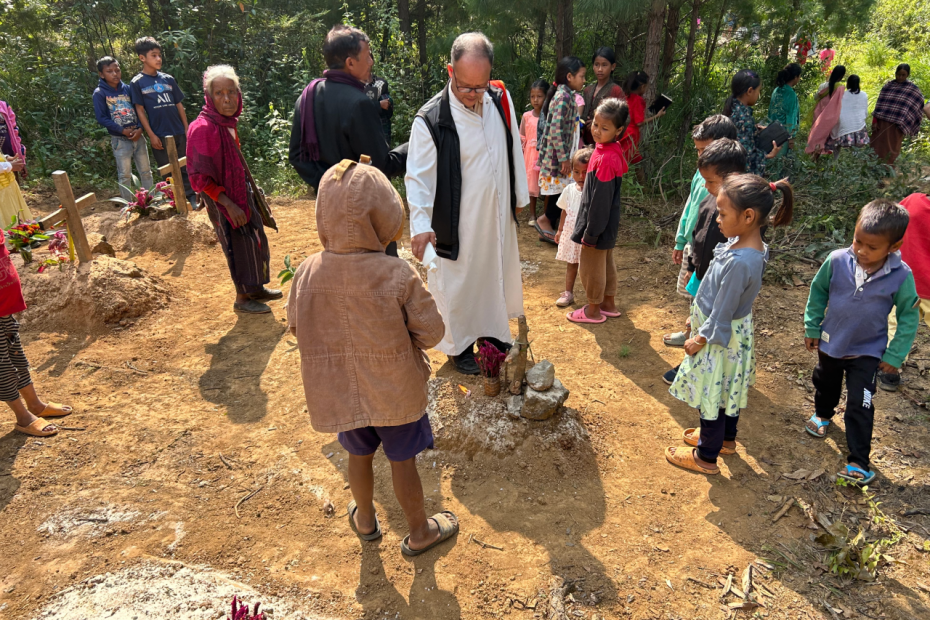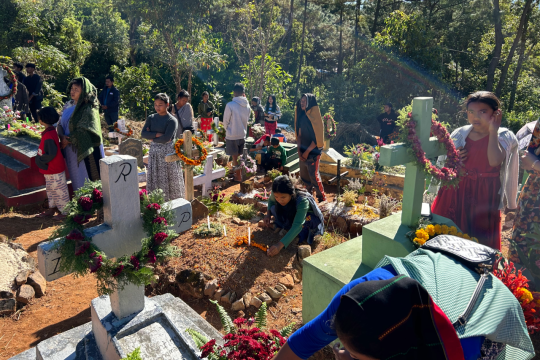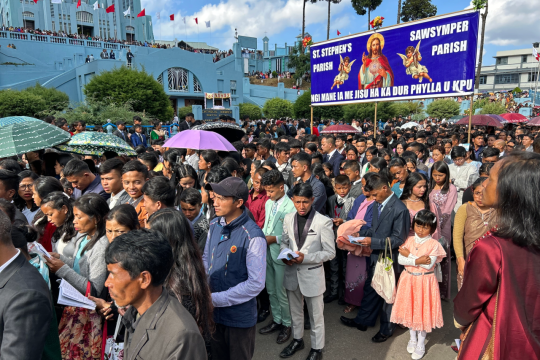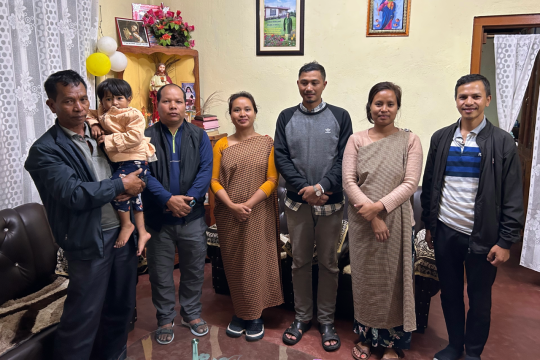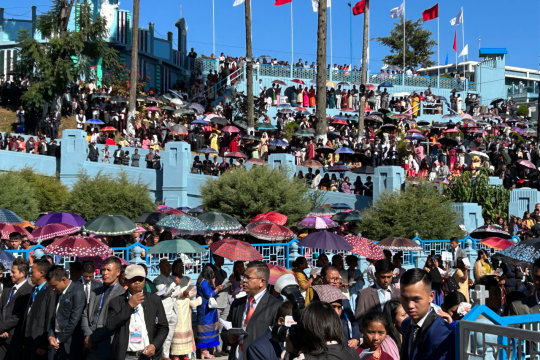Whether compared to mainland Indian norms or norms in other parts of the world, family and gender roles are undoubtedly among the most interesting characteristics of Khasi and Pnar (Jaintia) life. Family is the central, determinative social institution here, but the organization of family life, including for Catholics, differs markedly from the father-as-head-of-household structure that Catholicism often idealizes.
In interviews, people from “mainland” India frequently commented on how very different Khasi and Pnar cultures are from their own in terms of family and gender roles.1 They marveled at how “free” women are in Meghalaya, a reference to the fact that women and men here mix freely in a manner that is not highly scrutinized as it would be in the mainland and that marriages are “love matches,” not arranged marriages. In Khasi and Pnar contexts, potential spouses choose each other and seek out the family’s blessing.2
Within the family, a person’s role takes precedence over individual self-definition. A woman addresses her husband or partner as “father of [child’s name]” and a man addresses his wife similarly. Family members, including siblings and children, are normally called not by their given names but by nicknames that delineate birth order and role. The oldest sister, for example, is “Kong Kong” in Pnar.3 Using these role-based nicknames is a sign of respect, and a child could get a beating for presuming to call a relative by his or her given name.
One “absolute sacrilege,” including among Christians, is for people to marry someone from the same kur, or clan, an inherited determination based on shared understandings of descent from an ancient common ancestress.4 The circle of membership in a kur is so wide that a prospective couple would have to ask to find out each other’s kur. Priests are careful to avoid marriages that violate these rules.
Matrilineal Particularity
Asked to name the most significant thing that readers from other places should know about their culture, Khasi and Pnar people always started by noting that their family structure is matrilineal, i.e. defined by relationship to the mother’s, not the father’s, family and kin. Matriliny is manifested in local customs for property ownership, naming conventions for children, and family decision-making, among other matters.
In a Khasi or Pnar family, women, not men, own a family’s land and home.5 On the death of the woman who owns the home, her youngest daughter inherits her mother’s holdings.6 That daughter is also responsible for her parents’ care as they age. Mothers sometimes give pieces of land to their other daughters to help them get established, but sons do not inherit. When a man marries, he moves into his wife’s (or more commonly, his wife’s mother’s) home.7 When a couple builds their own home because the wife has not inherited one, it belongs to the wife and is passed to her youngest daughter.
Children are given their mother’s family name and belong to the mother’s clan for life. The husband and father of a family thus have a different last name from his wife and children. Children should know and respect the father’s family, but they ultimately belong to the mother’s family and women traditionally make the primary decisions in the household.8 Some interviewees reported that “of course” they try to share decisions with their husbands equally and respectfully, but most said that the home is entirely the realm for maternal decision-making. If the mother is unable to care for her children, her kur (clan), rather than the father, bears primary authority and responsibility for that child’s upbringing.9 Adherents of traditional religion even return a deceased husband’s bones to his mother’s clan for burial, rather than interring them with his wife and children, though Catholics today generally bury families in the local village cemetery.10
Several interviewees said that under Christian and Western influence men are given, and expected to assume, greater leadership in the home, but the degree to which this is allowed or taken up by men was debated in group interviews. One lay male interviewee claimed, “In the villages, women are completely in charge. Men are not. Instead of talking about women’s empowerment we actually need to talk about men’s empowerment.” But many women disagreed. Asked about this claim, Susannah, a leader in her parish, said, “It happens only because men have to go to their wife’s house. To say he’s disempowered is not true.” She added that husbands and wives “together make major decisions for children. They discuss before doing anything exceptional.”
Scholars differ in their own assessments as well. One reports, “a father has no important [educational or supervisory] part to play in his children’s home… yet the father has his part to play.”11 In his telling, though, that part seems to be limited to the responsibility to provide sustenance for the children. Another asserts that Khasi women stand out compared to “women in mainland India because they enjoy a significant degree of equality, freedom and responsibility.”12 A third scholar argues that while the matrilineal system of inheritance means that some women have an independent source of power and economic protection, it also imposes additional responsibilities on women, especially the youngest daughter.13
Control over family property, households, and lineage provides women with significant power, but that authority does not carry over into every aspect of the public sphere. Beyond their responsibilities at home, women are visible everywhere, laboring in fields, working in markets, and teaching in schools, among other roles. In Shillong and elsewhere, educated women occupy many important professional positions. Nonetheless, “Women are excluded from the traditional Dorbar Shnong which is the traditional local governance council.”14 A traditional saying communicates this sentiment: “When the hen crows it will be the end of the world.” Indeed, in one context, interviewees reported that their culture only permits males with whiskers to speak at traditional governance meetings.
Asked why women did not participate in village discussions, one man explained it was because they were “too emotional,” a response that caused quite a stir in the group when he said it. Asked what they made of that response, other women explained that they don’t participate because they “lacked the proper knowledge of situations” due to an inadequate education, which cripples them in society. Having pointed out to them that there were a great many religious sisters who were leaders in significant ways in all sorts of institutions, one woman responded, “It is different in urban areas [from] villages. Here in our village people don’t have that much knowledge to lead… they have so many children. In urban areas, the father and mother have the knowledge to send them to school for a good education, plus they have less children so they can send them to school to get a proper education. In our village, women have so many children, plus they cannot afford to send all of them to school… Five children is the [smallest family] in our village. Plus, if they have a good husband, they will respect the husband to do the work for the public.” “I have six children to raise,” another noted. “Sisters,” a woman added later, “can do this because they don’t have children.”
Occasionally in interviews or open conversations, it became evident that women were disproportionately expected to carry or embody Khasi culture not only in the home but also in public by how they dressed or carried themselves. Men could dress in rather Western fashion but several men commented that Khasi culture was being diminished by the way women dress today.
Patriarchal as Catholicism is in its structure and imagination, the Catholic Church, like the Protestant churches, is usually said not to have (at least in interviewees’ memory) challenged the traditional matrilineal system that gives women the leading role in the family. The gendered structures of traditional village leadership have also seemingly remained in place.
Beyond this, the evidence is mixed. Catholic parishes provide women with a greater number of public leadership opportunities than they have in other aspects of village life. In villages, laywomen took turns leading prayer when the priest and sisters could not come, but many still said that they would not speak about an issue in the church and would defer when it came to parish leadership in roles like catechist.
Snaitang asserts that while missionaries brought patriarchal attitudes and have often limited women’s leadership within the church to the role of helper, the educational institutions and social networks they sponsored made it possible for many educated women to take on a variety of modern leadership roles in key institutions.15 Still, one woman’s comment highlighted the ways that empowerment in one context did not necessarily transfer into other contexts: A teacher said that she was comfortable in front of the classroom but not with speaking in public, whether in village or church settings.
A few interviewees said that it would be a mistake to imagine that the matrilineal system was the thing that most empowered women here. “Women’s empowerment really happened about 30 years ago,” one said. Greater degrees of education led to work opportunities, and smaller families made all the difference. In that sense, many of the works of the church here are modernizing: hospitals, schools, and education give women greater opportunities. The attitudes of the church may respect the traditional system, but the institutions of the church bring forth social changes that can impact the local social system.
Interviewees reported that there is no talk about women’s ordination here. They are “more interested in talking about how to get more priests and religious,” one summarized. Asked about what people wanted from the synod, an open-ended way to see if the same issue arose, few people offered any suggestions at all. “We’ll let the Church tell us what they decide,” one woman reported.
Though men often lead as catechists and in other roles, women in villages frequently argued that they saw women as more naturally spiritual and religiously engaged. “Men are lazy,” one woman in a mixed group laughed. Another said, “They are stubborn to the core.” Women go house to house to look after each other if they are not going to church or joining block prayers.
In terms of educational attainment and literacy, women are generally as well off as men. Data for the state of Meghalaya as a whole, which does not specify ethnic group, report that women aged 15-49 have a higher literacy rate (87.6%) than men (83.2%).16 Interestingly, in the villages, education for girls was perhaps most highly valued. Women interviewees thought that girls sent to school would take better advantage of the opportunity than boys.
While female infanticide has been common in many parts of India and is evident in demographic data, the sex ratios of Khasi children did not bear evidence of the practice.17 Among children under age 14, the natural sex ratios are reversed. Girls outnumber boys in both rural and urban settings.18 Aging seems to be harder on male life expectancy. The ratio of over-age-50 women to men is highly skewed in rural areas and significantly skewed in urban ones.19
Contemporary Challenges to Family Life
To a remarkable degree, conversations with Khasi and Pnar people always seemed to circle back to the family, rather than the individual, as the center of concern. When asked about the size of the parish, laypeople, and clergy always responded by estimating the number of families, not the number of individual parishioners. Questions about social problems—alcohol and drug abuse were named as two—always seemed to turn back to how they impacted families. Asked about prayer and what concerns they brought before God, interviewees generally focused on, as one woman described it, “peace in our family” or the health and safety of their family. Their articulated concerns were far more immediate and familial than abstract or global. They worried about how to send their children to school and whether their children would, as one put it, “be obedient, love and respect others [especially] all the elders… [and that] God will help them understand this.”
Despite the centrality of the family, many interviewees pointed to serious difficulties that families faced. A key paradox is that while family is enormously important as a social institution, people consistently reported families broken in ways they regret. Two women estimated that in 40% of their village’s families, husbands/fathers had left women and their families to raise children without any help from the men. One lamented, “The biggest problem now relating to men is alcohol. So much problem with alcoholic men giving problems in the family, not bringing up the children in a proper way.”
Though no one could cite statistics, all said that divorce and abandonment by fathers were both typical and that it was a generations-old problem, not a new one. Divorce is common in traditional Khasi culture, and that hasn’t changed too much today, despite the ideals that Christianity brings.20
Villagers offered a variety of explanations. While they clearly respected male leaders in the community, the woman explained that so much falls to women to lead because the men are “very weak… the women are stronger.” Others ascribed the challenges to poverty, alcohol, or a feeling that “our faith is only surface-level.” One Catholic teacher whose own father had left his family blamed it on the traditional system. While men have responsibilities toward their wives and children, she said, they never really belong in the house.
Roland Kharkrang notes that the historic norm was for a husband to remain in his mother’s house and to visit his wife at his mother-in-law’s house only at night.21 Both Catholic and Protestant leaders have tried to help foster stronger marriages but have not succeeded to the extent that many people wish.
The frequency of divorce or paternal neglect is not a function of a tendency towards early marriage. Interviewees report that even among Christians, both Catholic and Protestant, marriages tend to be formalized late, often after the birth of one or more children. Couples more frequently than not begin by cohabiting and delay being married in the Church as long as possible. Clergy sometimes resort to saying that, after a second child, they will only baptize any more children if the parents get married.
The Resilience of the Khasi Familial System
Whatever brokenness people described was at the nexus of the husband-wife partnership. The system does not seem to be on the verge of any change; A young male student, responding to a question to a group about whether he would change the system, simply said, “We have no choice.”
Where there are challenges, extended family steps in to fill the void. Several interviewees sought to draw attention to the fact that, unlike many parts of India and the West, “you don’t see homeless or beggars here.” While there are a remarkable number of Catholic social institutions run by religious orders, including hospitals, schools for the deaf, and other schools, in traditional society, the clan is the institution expected to care for the infirm or impoverished members. Failure to do so brings shame upon the clan.22 Khasi culture is at the root of this and shapes what they see Christianity asking of them, a belief that is the opposite of “God helps those who help themselves.” That cultural-ethical imperative is called tipbriew tipblei:
“The words tipbriew tipblei literally mean ‘to know human beings and to know God as well.’ In other words, it implies that we must be conscious of our relationship with God and our fellow human beings… A person can be considered tipbriew tipblei only when he or she fulfills his or her duty towards fellow humans. All the members of the clan who are experiencing misfortune or misery find their shelter or refuge in the khadduh’s [the youngest daughter’s] house or ka inseng [the closer family members on the mother’s side]. But if ka khadduh cannot afford to help the needy members, it is the moral duty of other family members to help them.”23
- 1The entries in the articles on Meghalaya are based on group and family interviews with dozens of Khasi and Pnar (Jaintia) people in the village of Umbir at the parish of St. Francis Xavier; in two parishes in Shillong; at St. Peter’s Parish, Jaliphet and in the village of Muknor; and in Umoid, all in the Eastern half of Meghalaya. As is fitting for Khasi culture, all of the interactions were with at least two people, often six or more. Interviews were conducted in English, Khasi, Pnar, or some combination, made possible with help from a number of local translators. The research also provided occasional opportunities to speak with Indians from other states in India to learn about their impressions of Khasi culture.
- 2For a more extended discussion of the traditional marriage system, including its provision for divorce, see, Hamlet Bareh Ngap Kynta, The History and Culture of the Khasi People: Fourth Edition (Guwahati: Spectrum, 2016), 320-24.
- 3For a full explanation of the system, see Davina Diengdoh Ropmay, “Kinship Terminology of the Khasis,” Anthropology Today (Shillong, India: Don Bosco Center for Indigenous Cultures), vol 3 (2018): 66-82.
- 4See Helen Giri, “Social Institutions among the Khasis with Special Reference to Kinship, Marriage, Family Life and Divorce” in Tribal Institutions of Meghalaya, ed. S K Chattopadhyay (Spectrum, 2017), 159-160; and Shanba Hayong, “Clan and Family in Khasi Society” in Family and Clan in North East India: Reflections by Christian Scholars, ed. Alphonsus D’Souza, Lalnghakthuami, and Pangernungba Kechu (Guwahati: North Eastern Social Research Centre, 2015), 52-78.
- 5There are ways that a man can acquire and own some property. Men are entitled to keep and dispose of “non-ancestral” property that they gained through work before they married. But the bulk of a family’s property, including the ancestral land and home, belongs to the wife and is inherited by the youngest daughter. Western notions of ownership may not capture the essence of the system. Some interviewees report that it would be more appropriate to regard it as an act of intergenerational stewardship than ownership, since the women who “own” property aren’t free to easily sell it. Indian law also gives Khasis special rights so that their land cannot be sold to non-Khasis. Several interviewees mentioned instances where they thought that intermarriage was being used by men to take Khasi land.
- 6The system is the inverse of the ancient European system of primogeniture.
- 7Men can conduct their own business and sign contracts, but their wife, mother, or sister’s land and home cannot be sold to satisfy their debts. For tribal variations on this system, see Bareh Ngap Kynta, The History and Culture of the Khasi People, 326-332. Kyanpham Singh, who regards the matrilineal system as a fundamental source of Khasi identity, without which, he believes, his “race” will disappear, also outlines its rules and complexities. Kyanpham Singh, “The Khasi Law on Property,” in Tribal Institutions of Meghalaya, ed. S K Chattopadhyay (Guwahati: Spectrum, 1985 and 2017), 121-136.
- 8One specification of the system is that a family’s eldest maternal uncle holds a special status as a senior counselor in his niece’s home—a status greater than he is entitled to in his own home.
- 9Shanba Hayong, “Clan and Family in Khasi Society,” in Family and Clan in North East India: Reflections by Christian Scholars, ed. Alphonsus D’Souza, Lalnghakthuami, and Pangernungba Kechu (Guwahati: North Eastern Social Research Centre, 2015), 56.
- 10Hayong, “Clan and Family in Khasi Society,” 58.
- 11Bareh Ngap Kynta, The History and Culture of the Khasi People, 319.
- 12O.L. Snaitang, “Christianity and Khasi Matrilineal Women of Meghalaya,” in Family and Clan in North East India: Reflections by Christian Scholars, ed. Alphonsus D’Souza, Lalnghakthuami, and Pangernungba Kechu (Guwahati: North Eastern Social Research Centre, 2015), 177 and 183.
- 13Lucy Zehol, “What Do the Gender Ideologies in Khasi and Naga Societies Reveal?,” in Gender Implications of Tribal Customary Law: the Case of North-East India, ed. Melvil Pereira, et. al. (Guwahati: North Eastern Social Research Centre, 33-39.)
- 14Kympham Singh writes, “From ancient times to the present day, a Khasi woman’s presence and participation in Khasi traditional councils is not yet countenanced.” Kympham Singh, “Syems and Durbars in Khasi Polity,” in Tribal Institutions of Meghalaya, ed. S K Chattopadhyay (Spectrum, 2017), 14. See also Zehol, “What Do the Gender Ideologies in Khasi and Naga Societies Reveal?” 35.
- 15Snaitang, “Christianity and Khasi Matrilineal Women of Meghalaya,” 186-8.
- 16Government of India, Ministry of Health and Family Welfare, National Family Health Survey - 5, 2019-20, State Fact Sheet, Meghalaya, International Institute for Population Sciences, Deemed University, n.d., 3.
- 17In official data, the ratio of girls to boys in urban areas is slightly lower than the natural rate, but in rural areas, it is higher than the natural rate. Government of India, Ministry of Health and Family Welfare, National Family Health Survey - 5 2019-20, State Fact Sheet, Meghalaya, n.d., 3.
- 18Deimaphishisha Sun, Khasi Of Meghalaya: Differential Reproduction and Family Planning (Delhi: B. R. Publishing, 2016), 16.
- 19Sun, Khasi Of Meghalaya, 16.
- 20Giri, “Social Institutions among the Khasis,” 170.
- 21Roland Kharkrang, Matriliny on the March: A Closer Look at the Family System, Past and Present, of the Khasis in Meghalaya, (Shillong: Vendrame Institute Publications, 2012), 95.
- 22Hayong, “Clan and Family in Khasi Society,” 64-65.
- 23Hayong, “Clan and Family in Khasi Society,” 66.
